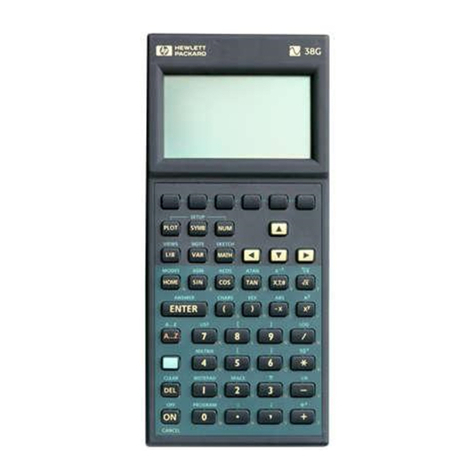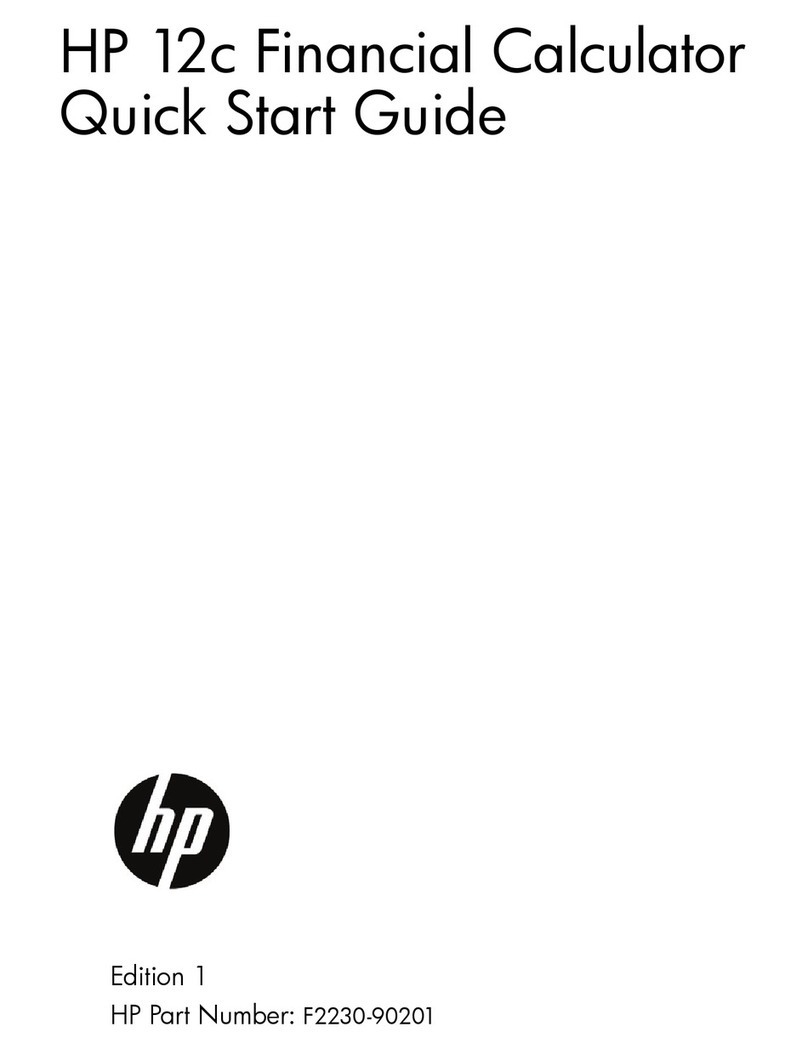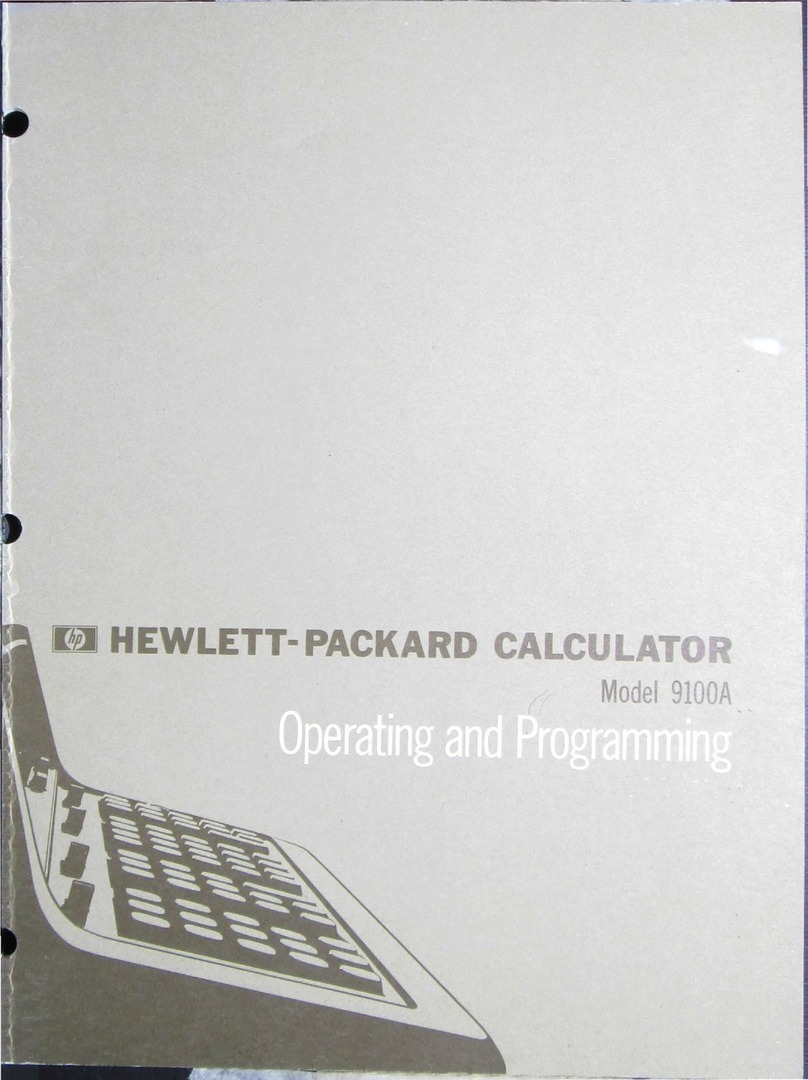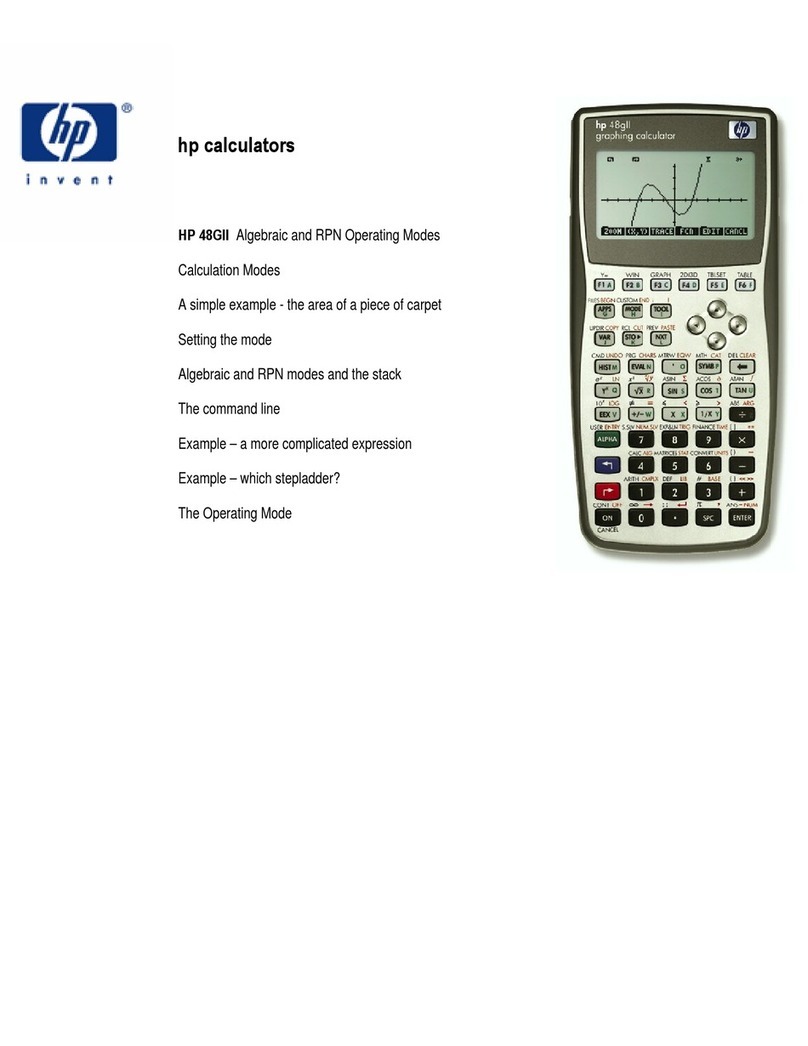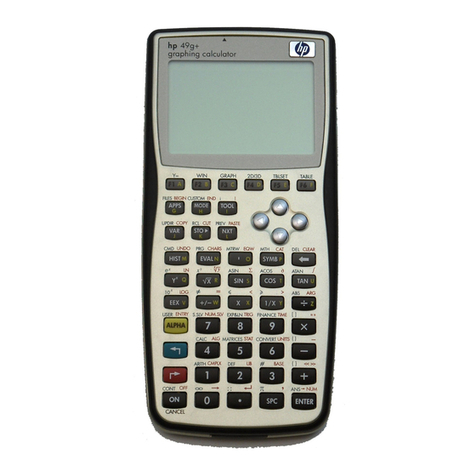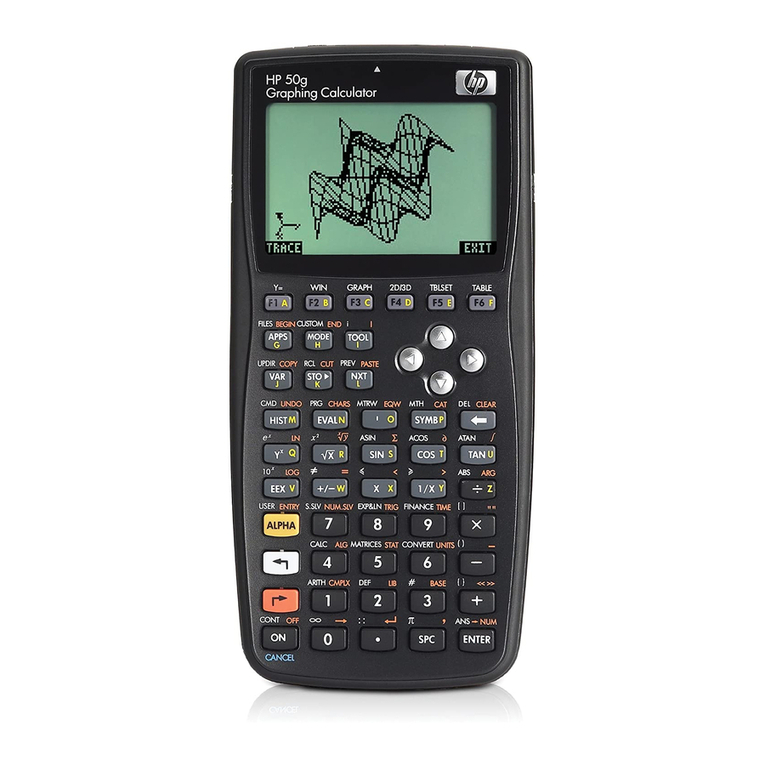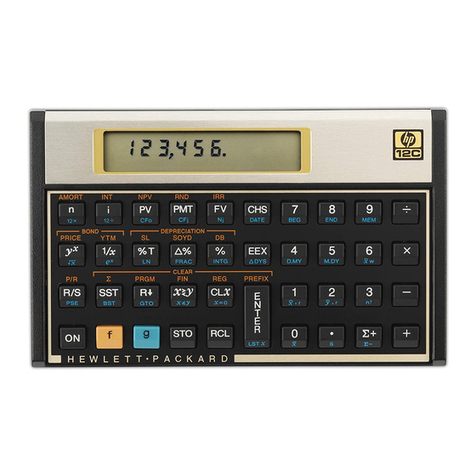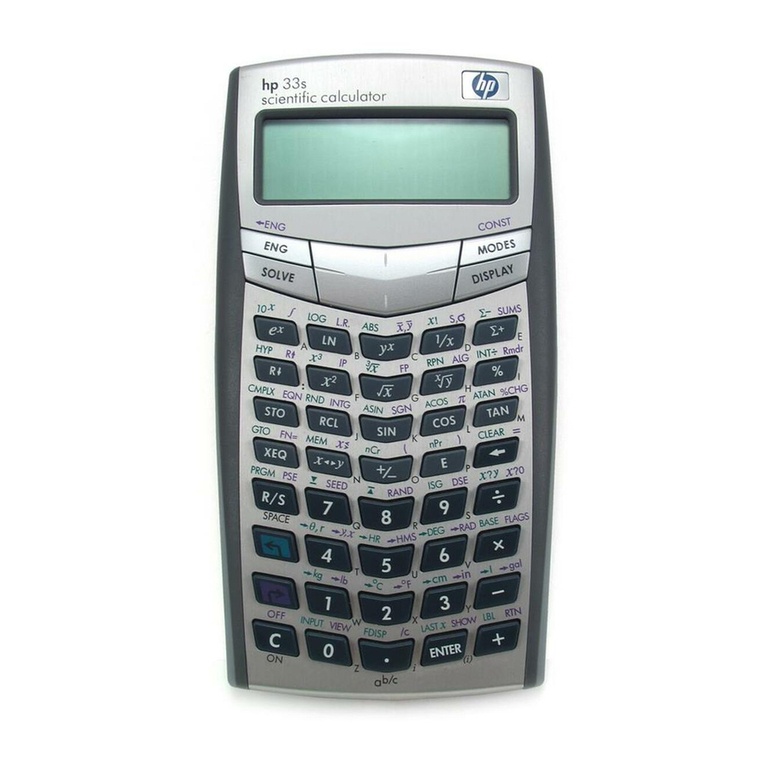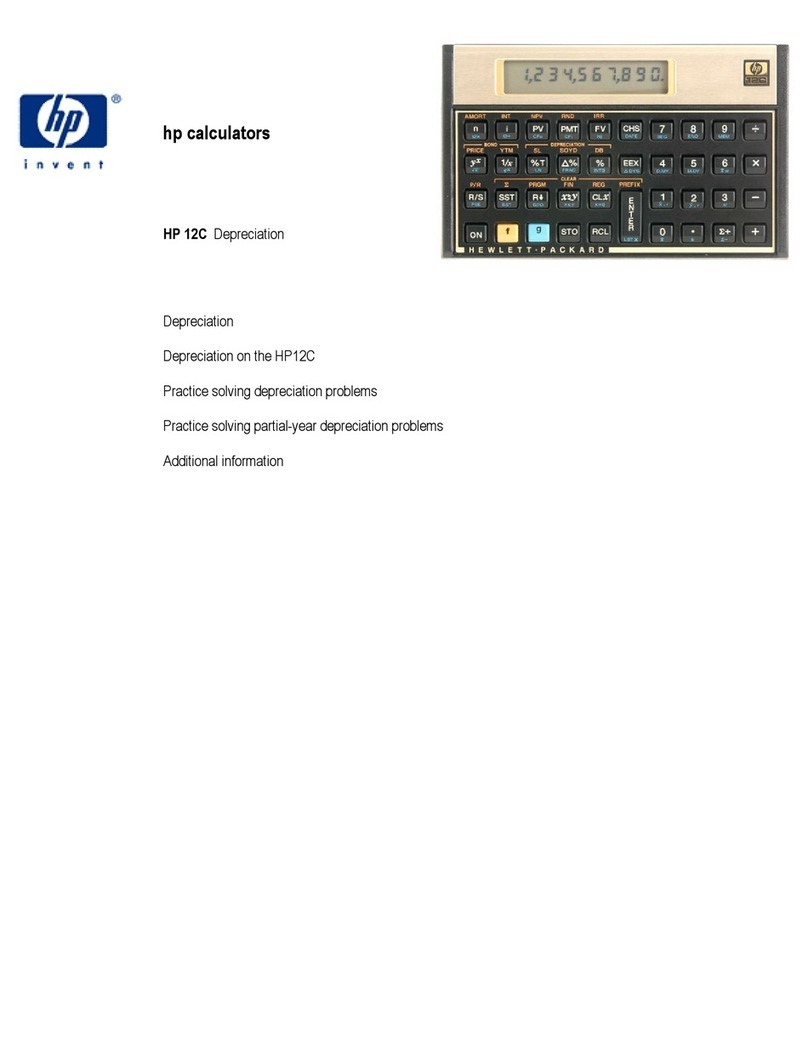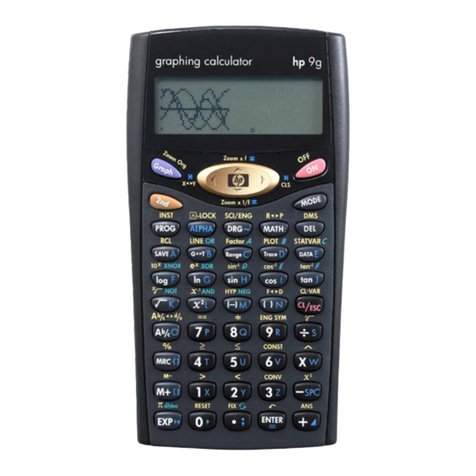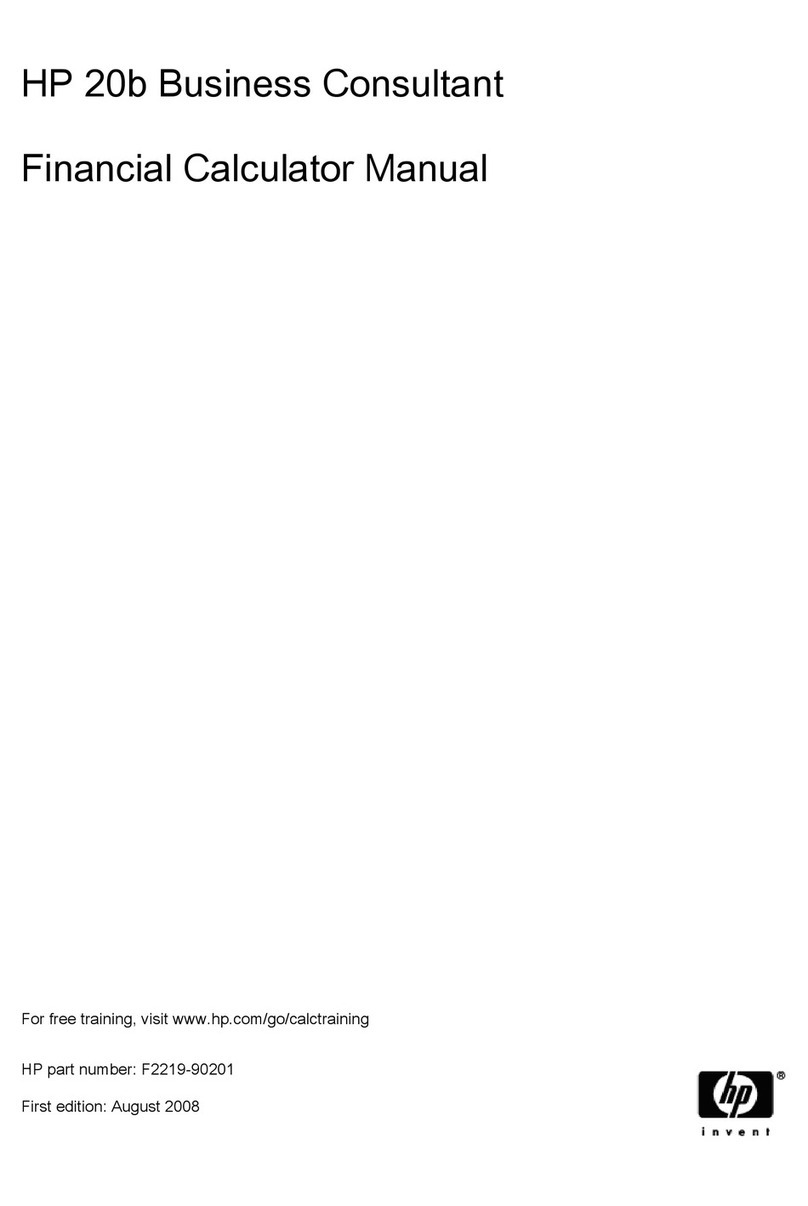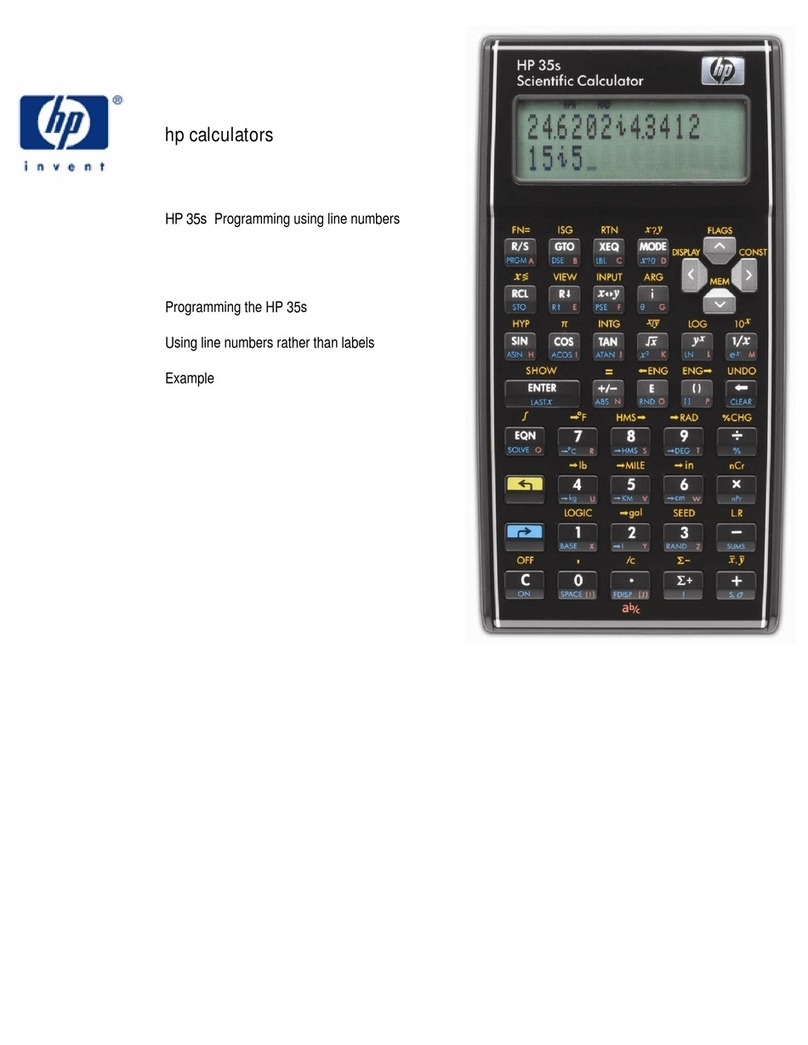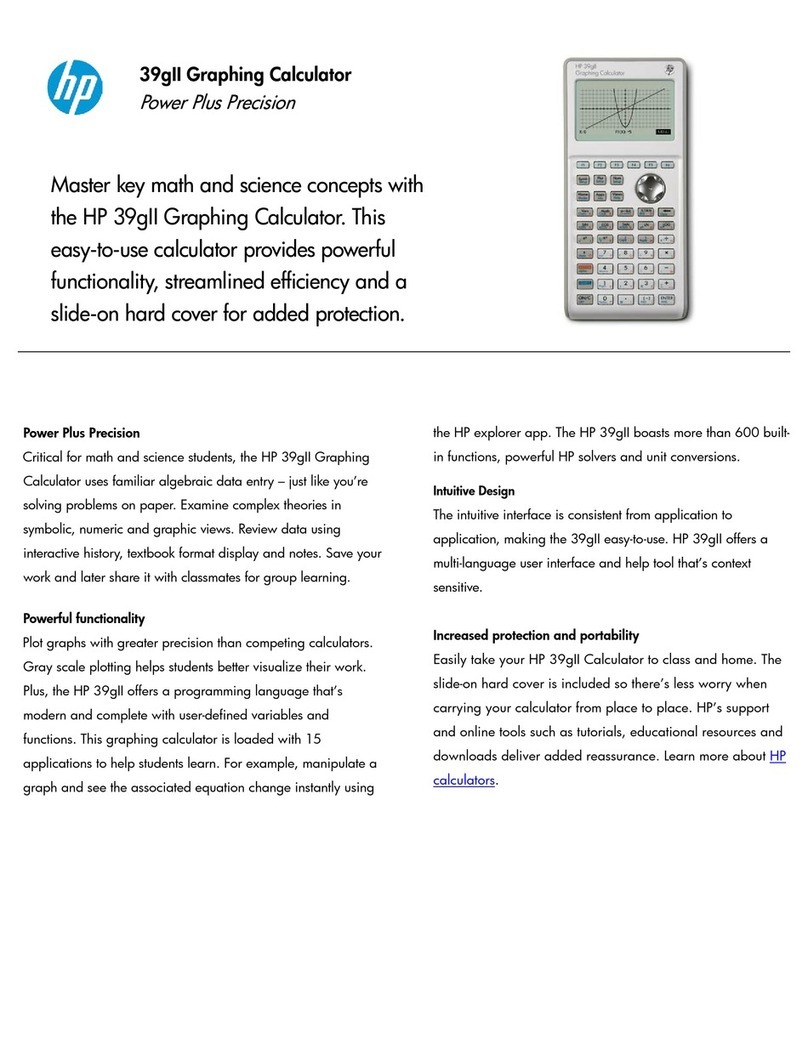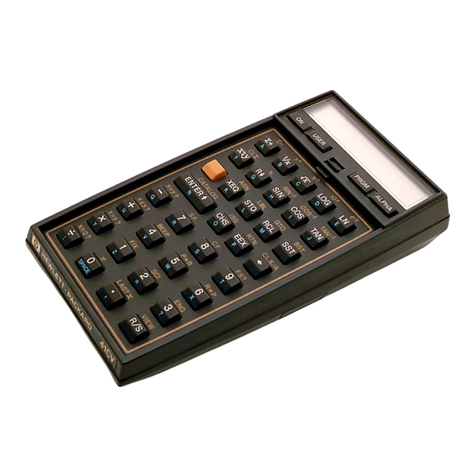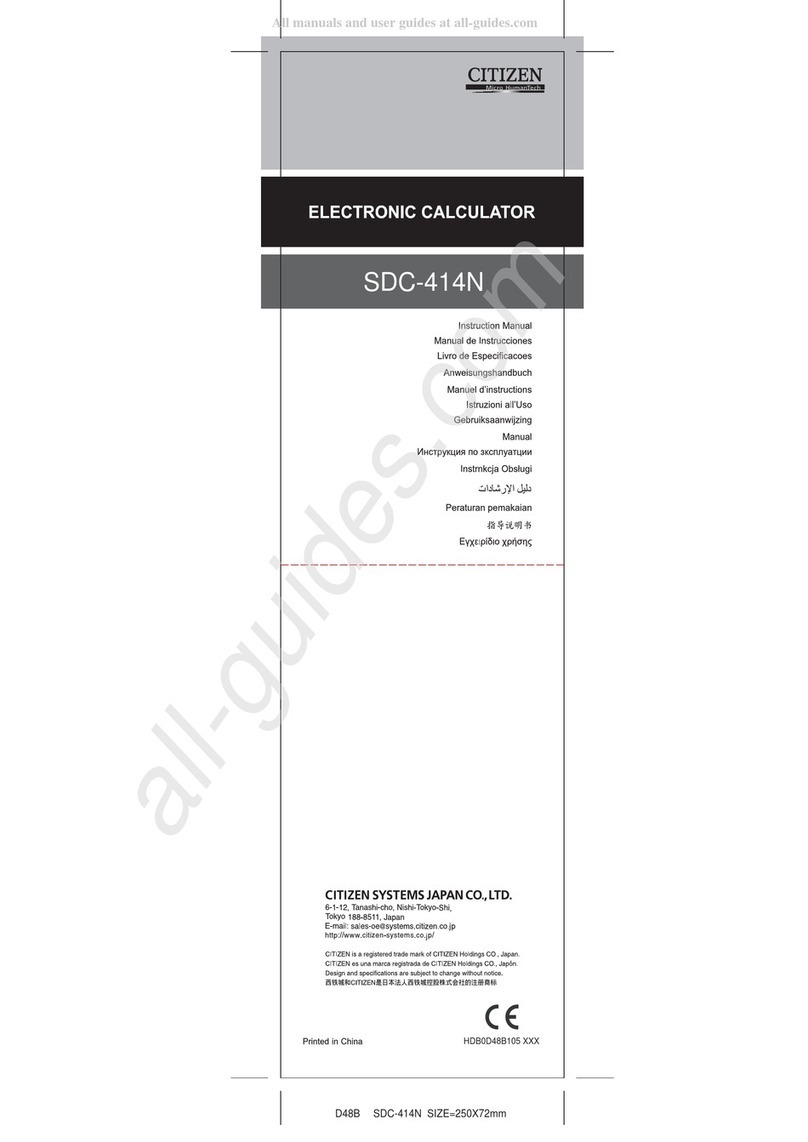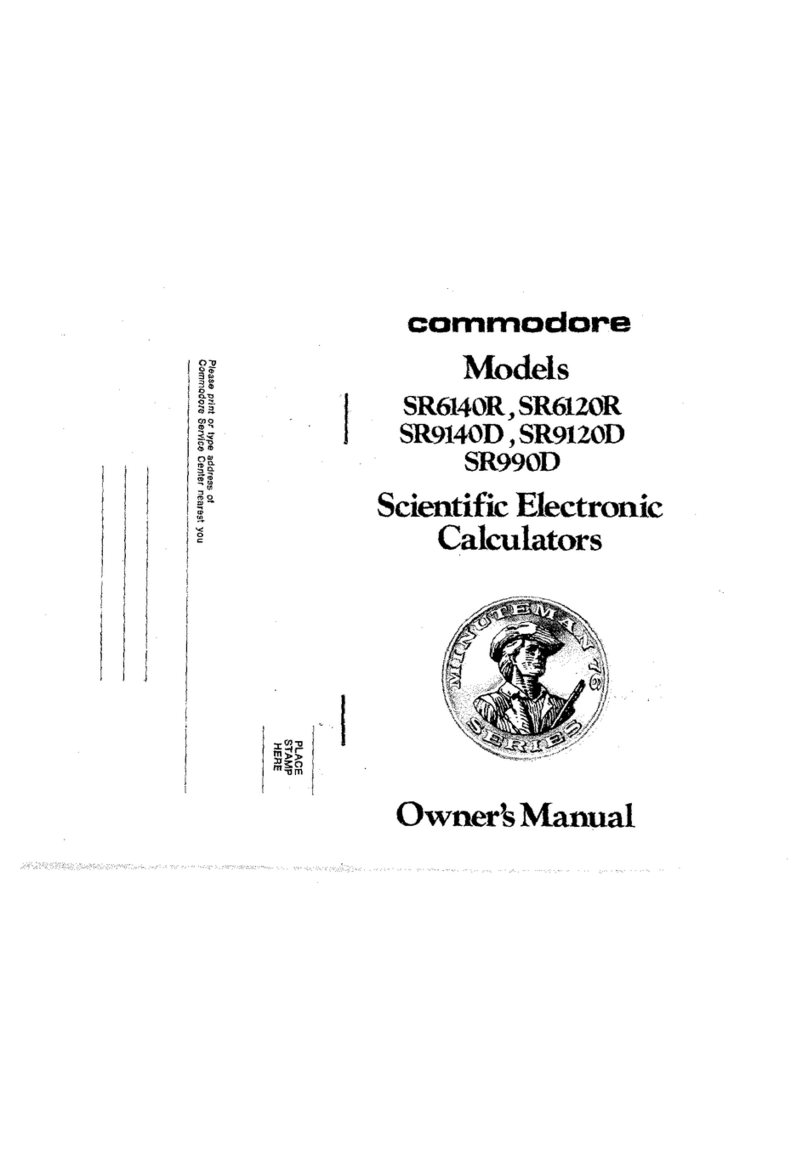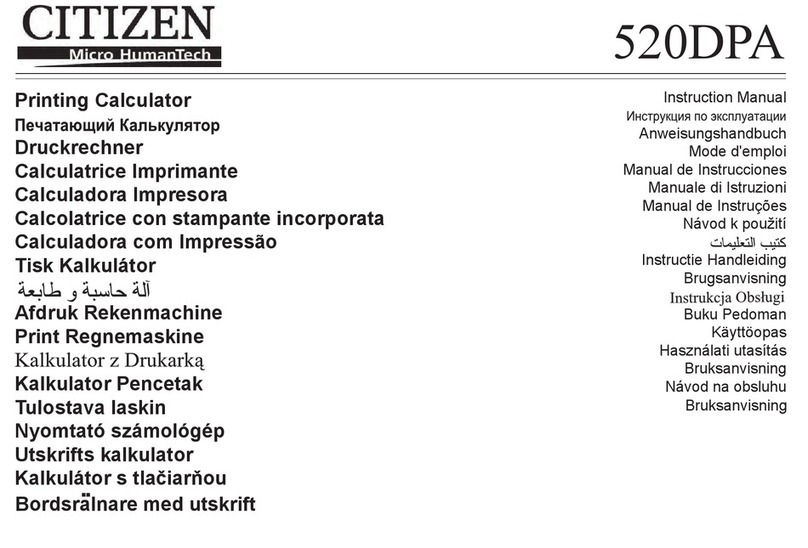
hp calculators
HP 20b Using Memories to Solve Problems
hp calculators - 2 - HP 20b Using Memories to Solve Problems - Version 1.0
Constant memory and planning
Because of the HP 20b Constant Memory feature, any current computations may be stopped at any moment for later
resumption without any data loss. In the HP 20b, memory is organized as a set of registers, where each register can
hold a number representation of any positive or negative value with a 12-digit mantissa and a three-digit integer, positive
or negative exponent of ten.
Memory registers
There are 10 data storage registers in the HP 20b calculator. These registers can be directly addressed anytime it is
necessary, provided that the register is available. Special care must be taken in regard to make sure that the chosen
register isn’t being used for other purposes. As a general rule, two basic operations can always be performed over
existing register contents: storing and retrieving (or recalling) numbers.
Assuming that the display contains a value to be stored, to store that number in a register, press :$ and then a
number key from 0 to 9. To retrieve the information stored in one of the registers back to the display and use it in further
calculations, press Land then a number key from 0 to 9.
It is also possible to store and recall values directly into the five Time Value of Money (TVM) registers, N, Y, V,
M, and Fby pressing :$ and then one of these keys. Values in these registers are recalled for viewing or
further use by pressing and then Lone of these keys. If you are not planning to solve a TVM problem, then these five
locations can be used as extra storage registers.
Other memory locations
The HP 20b also has memory space allocated to store statistical data and cash flow data. There is room in the HP 20b
to store a total of 50 statistical data pairs or 50 cash flow values and frequencies, or any mixture of the two, provided
there are 50 or fewer total pairs. If you were to store one statistics data pair, you would then have room for 49 distinct
cash flows, for example. These memory locations are not covered in this learning module, as they are discussed
elsewhere.
Example 1: The index for conversion between American Dollars and Euros is stipulated as 1.00 Euro = US$1.59.
Which keystroke sequence stores this index in register R1?
Solution: The complete sequence for typing the index in and storing its value in register R1is:
1.59:$1
Understanding register arithmetic
Along with storing and retrieval, you can use storage register arithmetic and recall register arithmetic on the ten memory
registers. The next example shows how this would work for storage register arithmetic.
Example 2: The index for conversion between American Dollars and Euros has its valued raised by 1%. What is the
keystroke sequence that updates the index in register R1?
Solution: When the keystrokes below are used, the index is updated in R1.






